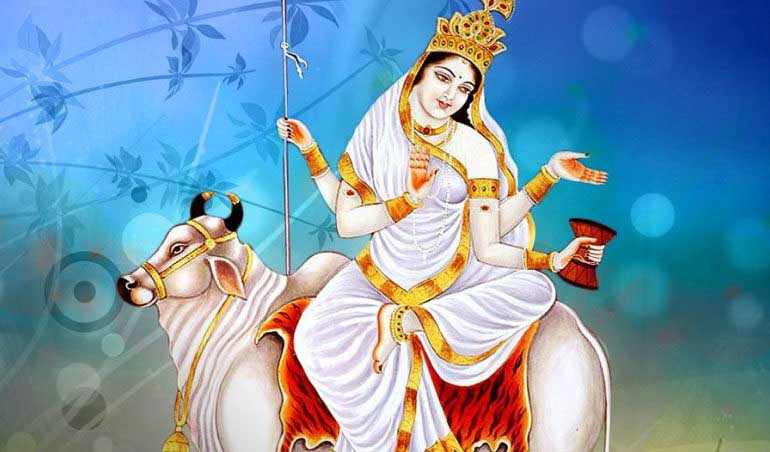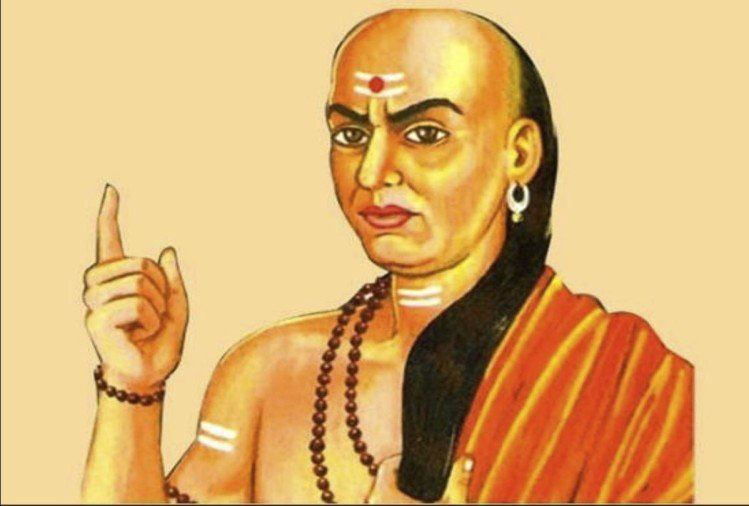Ghatasthapana Shailputri – First Navratri: Shailputri is worshipped on the first day of Navratri, which marks the beginning of the nine-day Hindu festival dedicated to the nine forms of Goddess Durga. The name “Shailputri” translates to “daughter of the mountains” (Shail meaning mountain and Putri meaning daughter). She is considered the purest embodiment of Mother Nature and the first form of Goddess Durga.
Iconography and Symbolism:
- Appearance: Shailputri is depicted riding a bull (Nandi) and holding a trident in her right hand and a lotus in her left hand.
- Symbolism: Her depiction symbolizes strength, purity, and devotion. The bull represents patience and persistence.
- Trident: It signifies the power to destroy evil and ignorance.
- Lotus: It symbolizes purity and spiritual awakening.
Mythological Significance:
Shailputri was born as the daughter of the King of Mountains, Himavat, and she is a manifestation of Parvati, who, in a previous birth, was Sati, the wife of Lord Shiva. After Sati self-immolated, she was reborn as Shailputri and later reunited with Shiva through penance and devotion.
Rituals and Prayers:
Devotees offer prayers and perform rituals to honor Shailputri on the first day of Navratri. The color of the day is usually red, symbolizing action and vigor.
Click here to learn more about Dharam Gyan
Spiritual Significance:
Shailputri represents the Muladhara Chakra (the root chakra), the base of spiritual development. Worshipping her instill a strong foundation of strength and focus, allowing devotees to begin their spiritual journey on a steady path.
Ghatasthapana Shailputri First Navratri
शैलपुत्री देवी की पूजा नवरात्रि के पहले दिन की जाती है। यह नवरात्रि की शुरुआत का प्रतीक है,
जिसमें माता दुर्गा के नौ रूपों की आराधना की जाती है। “शैलपुत्री” का अर्थ है “पर्वतों की पुत्री”
(शैल का अर्थ है पर्वत, और पुत्री का अर्थ है बेटी)। यह देवी दुर्गा का पहला स्वरूप है, जो प्रकृति की पवित्रता
और शक्ति का प्रतीक है।
शैलपुत्री का स्वरूप:
- वाहन: शैलपुत्री माता नंदी बैल की सवारी करती हैं।
- हथियार: इनके दाहिने हाथ में त्रिशूल होता है, और बाएं हाथ में कमल का फूल।
- प्रतीकात्मकता: त्रिशूल बुराई और अज्ञान को नष्ट करने की शक्ति का प्रतीक है, जबकि कमल शुद्धता
और आध्यात्मिक जागरूकता का प्रतीक है।
पौराणिक कथा:
शैलपुत्री माता पर्वतराज हिमालय की पुत्री थीं। वह पूर्व जन्म में सती थीं, जो भगवान शिव की पत्नी थीं।
सती ने अपने पिता दक्ष के यज्ञ में अपमान सहन न कर आत्मदाह कर लिया था। इसके बाद उनका पुनर्जन्म शैलपुत्री के रूप में हुआ, और उन्होंने तपस्या करके पुनः भगवान शिव को प्राप्त किया।
पूजा और विधि:
प्रथम नवरात्रि के दिन देवी शैलपुत्री की पूजा की जाती है। इस दिन का रंग लाल होता है, जो साहस और शक्ति का प्रतीक है। भक्तजन दुर्गा माता को घी, दूध, और फूलों का अर्पण करते हैं और उनसे शक्ति, साहस, और पवित्रता का आशीर्वाद मांगते हैं।
आध्यात्मिक महत्त्व:
शैलपुत्री का संबंध मूलाधार चक्र (रूट चक्र) से है, जो आध्यात्मिक उन्नति की नींव है। उनकी पूजा से आध्यात्मिक यात्रा की मजबूत शुरुआत होती है और साधक को स्थिरता और शक्ति प्राप्त होती है।
शैलपुत्री की आराधना से जीवन में स्थिरता, शांति और दृढ़ता प्राप्त होती है, जो आगे की साधना के लिए महत्वपूर्ण है।




